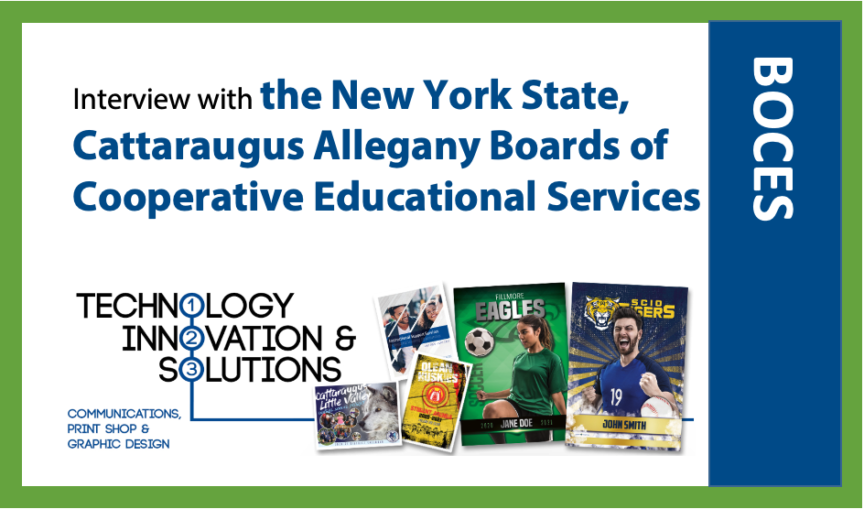Previously I posed the question: Inkjet, toner, offset. Do print service providers need them all? Part 1 of this article provided an answer from Cheryl Kahanec, the CEO of Quantum Group, a full-service commercial printer in the Chicago area.
For Part 2, I spoke with Michael Graf who is the Technology Director of the New York State, Cattaraugus Allegany Boards of Cooperative Educational Services (BOCES). The BOCES organizations were created in the 1930s to meet the educational needs of students in rural New York State school districts. The Cattaraugus Allegany BOCES supports 22 school districts across four counties in southwestern New York state.
Graf leads a unique in-plant print operation. In addition to printing, the BOCES also provide special education, career and technical education, instructional support, information technology and management services. They have 10 employees in the print operation running an all-digital, cut-sheet shop and print approximately 30 million images per year.
This in-plant used to outsource all their printing to another New York BOCES. After attending a 2007 Xerox sponsored industry event for higher education, Graf formulated a strategy to setup a print operation for his districts. The goal was to reduce costs and improve turnaround. They installed their first iGen in 2008 and expanded into inkjet a decade later in 2019. They currently run two Xerox iGen 150s and one Baltoro. They also have a digital large-format printer.
The primary applications include curriculum materials, books, agendas, and calendars. The inkjet printer enables them to produce many lower area coverage jobs and black-ink only jobs with improved turnarounds and a lower chargeback cost. The heavier weight stocks for book covers and higher area coverage jobs are run on the iGens. All finishing is completed offline. Their services include graphic design to support teachers and administrators in creating materials.
Logistics for Delivery
During the pandemic, BOCES had a brief shut down and has reopened with very limited staffing. Graf led the charge to support students, teachers and parents. The team had to develop an application for teachers to submit jobs. Then the team had to manage over 9,000 files to create printable PDFs. The speed of inkjet enabled them to print customized kits and materials in one week.
After printing, the next hurdle was to figure out how best to manage the logistics of delivering curriculum materials to students and teachers across 2,500 square miles.
Inkjet vs. Toner
The primary decision criteria for running on the Baltoro is speed and area coverage. BOCES has migrated many jobs from the iGen to the Baltoro. Graf sees the need for both toner and inkjet to support the turnaround and quality needs of his customers.
The BOCES has a right of first refusal with their school districts. Many BOCES programs are supported totally or in part by a variety of state and federal grants. Local districts receive a partial state aid reimbursement for expenditures made with the BOCES. This payment helps to defray the cost of shared services and facilitates participation. This cost methodology also creates a tight partnership between each BOCES operation and their related school districts. If a school buys print elsewhere, they pay from their cost center with no reimbursement from the state.
Print demand grows
The BOCES supplies all technology including iPads to their school districts. Despite flat enrollment there is increased demand for print, with volumes growing year over year. Graf’s investment strategy includes expanded animation services, web-to-print software, flat bed wide format printing and an additional digital toner printer.

